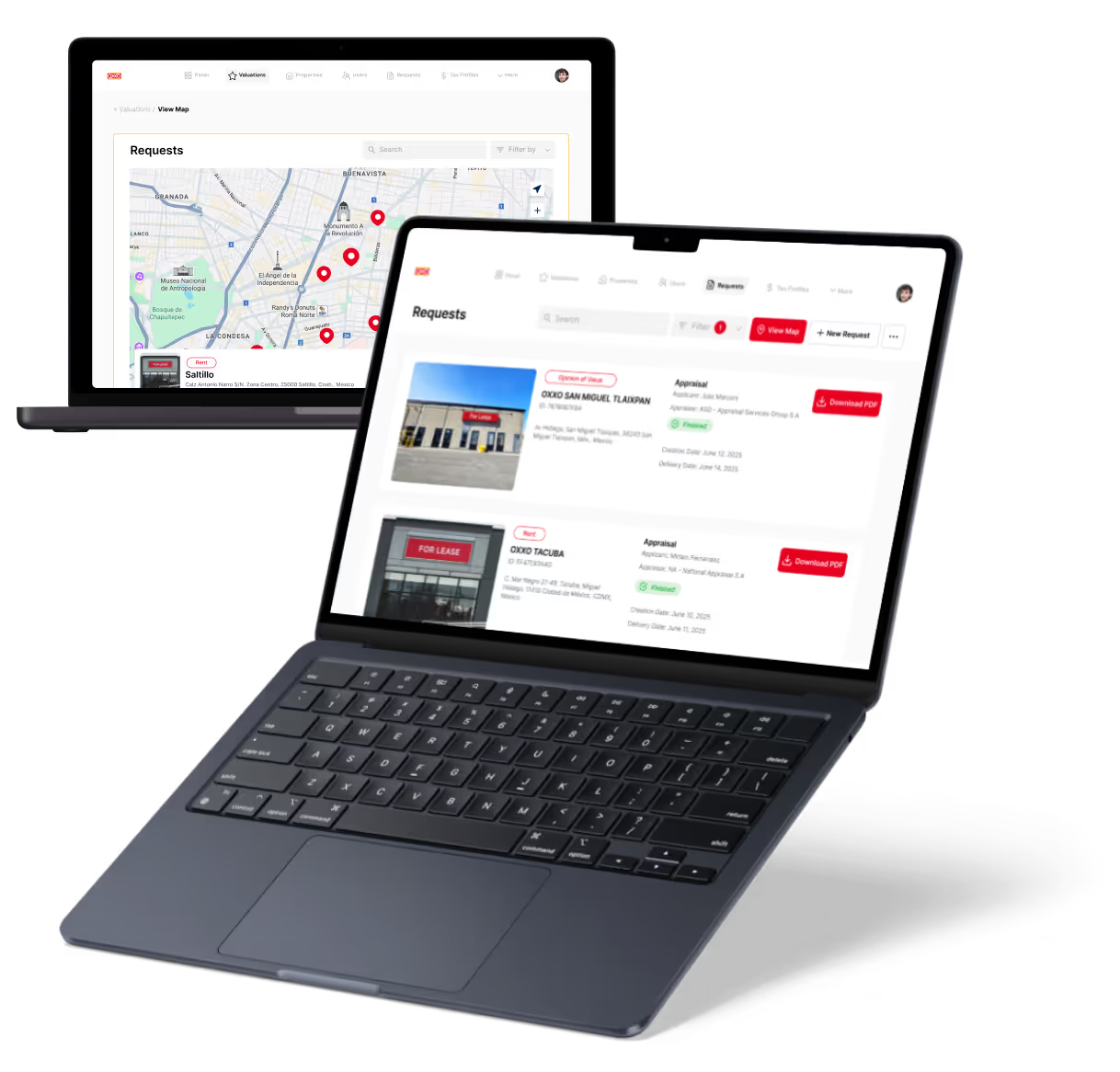Airtable vs Trello | 9 Factors to Decide the Best One
10 min
read
Compare Airtable vs Trello for team projects, task management, and workflows. See which no-code tool fits your needs best in 2025

Both Airtable and Trello help teams stay organized, but they work in very different ways. Trello is a Kanban board built for simplicity, used by over 2 million teams for everyday task tracking.
Airtable, with 450,000+ active organizations, goes deeper—it blends spreadsheets and databases with views like calendar, Kanban, and timeline. Airtable is more flexible for structured projects, while Trello is easier for quick setups.
Whether you’re managing content, product tasks, or team sprints, this guide compares their features, customization, and collaboration tools to help you choose the right one.
Quick Comparison Table - Airtable vs Trello
1. What’s the core difference between Airtable vs Trello?
The core difference between Airtable and Trello is how they handle information and workflows.
Trello is a Kanban-style task manager where you organize work into boards, lists, and cards. It’s simple, visual, and great for tracking to-dos or project stages. It works best for small teams or personal planning.
Airtable, on the other hand, combines a spreadsheet with database features. You can use different views—like grid, calendar, Kanban, or gallery—to manage projects, content, or workflows. It’s more powerful for structured data, custom fields, and linking tasks across tables.
Choose Trello if you want a lightweight, visual task board with easy drag-and-drop features. Go with Airtable if you need more flexibility, connected data, or different views to manage larger or more complex projects. Airtable gives you more structure, while Trello keeps it simple.
2. Views and user interface
Let’s start with how each platform helps you visualize your tasks and data.
Does Trello provide a simple Kanban experience?
Yes. Trello is known for its easy-to-use Kanban board layout. You create lists for different stages like “To Do,” “Doing,” and “Done,” then drag cards between them. It’s simple and clear, especially for teams new to project tools. Each card holds checklists, comments, labels, and due dates.
Trello works best when your workflow fits into a straight process with clear steps. It doesn’t require training, and teams can start using it right away. While it lacks other view types, its simplicity makes it great for tracking work in a visual, flexible way.
How many views does Airtable offer for project planning?
Airtable offers multiple views, giving more flexibility than Trello. You can switch between Grid (like a spreadsheet), Kanban, Calendar, Timeline, Gantt, and Gallery views. Each view helps you organize and visualize data differently.
For example, Calendar view is useful for deadlines, while Kanban works well for workflows. You can also filter and group tasks based on any field, such as status, owner, or priority. Airtable’s views are connected to the same data, so when you update one view, all others stay in sync. This makes it easier to plan complex projects with many layers.
3. Customization and data structure
Next, let’s see how much control you get over how tasks and data are organized.
How flexible is Airtable with fields and tables?
Airtable lets you fully customize how your data is structured. You can create different tables for tasks, people, projects, or anything else—and link them together. Fields can be checkboxes, dropdowns, attachments, long text, or even formulas.
This means you can build a simple to-do list or a full content calendar or CRM. Each project can be built to match your team’s exact needs. If you’re used to spreadsheets but want something smarter and more visual, Airtable offers the best mix of structure and flexibility without needing to code.
Is Trello enough for basic task management?
Yes. Trello is great for basic to-do lists, project boards, and team check-ins. You can create cards, set due dates, assign teammates, and add checklists. You don’t need to build tables or manage fields—everything is in a simple list view. Trello keeps things lightweight and doesn’t overwhelm users with options.
However, if you need structured fields, linked data, or more detailed reporting, Trello might fall short. For simple workflows like managing tasks or tracking client projects, Trello is more than enough. It’s best when you want clarity and speed.
Read more about:
4. Automations and workflow tools
Now let’s look at how both platforms handle repeated tasks and processes.
What kind of automation can you do in Airtable?
Airtable includes a built-in automation builder where you can set up triggers and actions. For example, when a status changes to “Done,” it can send an email or update another record. You can automate Slack messages, reminders, or sync tasks between tables.
Airtable also works with Zapier, Make, and other tools to connect it to thousands of apps. Automations are visual and easy to set up without code. This helps teams save time by reducing manual steps, especially in content planning, marketing, and operations.
Does Trello’s Butler automation work for daily tasks?
Yes. Trello includes a tool called Butler, which helps automate simple actions. You can create rules like “when a card is moved to ‘Done,’ mark the due date as complete” or “every Monday, create a weekly planning card.” Butler uses a natural language style that’s easy to understand.
It can also send emails, set labels, and more. While Butler is not as advanced as Airtable’s automations or external tools like Zapier, it works well for basic task flows. It’s useful for keeping boards clean and reducing small repetitive steps.
5. Team collaboration and ease of use
Let’s compare how easy each tool is for teams to start using and collaborate daily.
Is Trello easier for quick team adoption?
Yes. Trello is one of the easiest tools for teams to start using. You create a board, invite teammates, and add tasks. The drag-and-drop system is simple, and everyone can see progress right away. Trello is great for quick meetings, daily check-ins, and assigning tasks on the fly.
Even new team members understand it within minutes. While it’s not built for deep project data, its ease of use keeps things moving. For fast setup and teamwork, Trello works well across departments and team sizes.
Does Airtable support real-time collaboration?
Yes. Airtable is built for real-time team collaboration. You can invite team members to your base, assign tasks, leave comments, and update records together. Everyone sees changes instantly. You can also control who sees or edits each view or field. Airtable works well for larger teams that need more structure than Trello.
It’s especially useful for cross-functional teams managing content, design, or operations. While it may take more time to learn, Airtable’s permissions, views, and real-time features make it powerful for teams that need to organize more than just simple to-dos.
Read more about:
6. Scalability and project complexity
Let’s look at how well each tool handles bigger teams and more detailed workflows.
Can Airtable handle growing teams and complex projects?
Yes. Airtable scales well as your project grows. You can create linked tables, set up dashboards, and build advanced workflows. Whether you’re tracking marketing campaigns, customer feedback, or product tasks, Airtable lets you organize everything in one place.
It supports different user roles and permission levels, so large teams can manage their work safely and clearly. Airtable’s flexibility means it grows with you—you don’t have to switch tools as your team or needs expand. It’s ideal for long-term use across multiple departments.
How does Trello perform as project size increases?
Trello works well for small to mid-sized projects, but it can feel limited as complexity grows. You only get one board view per project, and managing many cards across lists can become hard to follow.
While Power-Ups and automation help extend its features, Trello isn’t built for advanced workflows or deep data relationships. Teams with larger projects often need to create multiple boards, which can become hard to manage. Trello is best for focused projects, not large-scale multi-team coordination.
Read more about:
7. Integrations and tool ecosystem
Now let’s compare how well each tool connects with other apps your team may use.
What tools does Airtable integrate with?
Airtable supports direct integrations with tools like Slack, Google Drive, Outlook, and more. It also works with automation tools like Zapier, Make, and Workato, so you can connect it to thousands of apps. You can create workflows between Airtable and email, CRMs, forms, or even social tools.
Airtable also has an API for custom development and offers extensions to add charts, maps, and dashboards. This makes it ideal for teams looking to centralize data and build custom workflows between tools they already use.
What services can you connect Trello to using Power-Ups?
Trello uses Power-Ups to connect with other services. These include Slack, Google Calendar, Dropbox, Microsoft Teams, Jira, Salesforce, and many more. Each Power-Up adds new features to your board, like viewing calendars, syncing tasks, or seeing analytics. Free plans allow only one Power-Up per board, while paid plans unlock unlimited options.
Trello also supports Zapier and native automation. While Trello has fewer integration options than Airtable for data-heavy use, its Power-Ups are simple to use and help extend its core functions for task and team management.
8. Mobile experience and on-the-go use
Now let’s see how both tools perform on mobile for remote and busy teams.
Is Trello better for mobile task tracking?
Yes. Trello is very mobile-friendly. Its app works smoothly on iOS and Android, keeping the same card-based experience as the desktop version. You can drag and drop tasks, add comments, and check notifications on the go. It’s perfect for quick updates during meetings or fieldwork.
Trello’s clean interface and fast sync make it easy to stay on track from anywhere. Whether you're assigning tasks or checking deadlines, Trello’s mobile app feels natural and lightweight. It’s one of the easiest tools to use on mobile for managing day-to-day tasks.
Can you manage data from Airtable’s mobile app easily?
Yes, but with some limits. Airtable’s mobile app lets you view, search, and edit records across different views. You can update data, add attachments, and switch between tables. However, it’s not as flexible as the desktop version—custom views and design options are limited on mobile.
Still, it works well for light updates or reviewing tasks while away from your desk. For example, sales teams can update client info, or project managers can check task status during travel. If you need full access to all features, desktop is better, but mobile is solid for basic work.
Read more about:
9. Final verdict – Airtable or Trello?
Let’s break down which tool is right depending on your project needs.
When to choose Airtable over Trello
Choose Airtable if your projects involve structured data, need multiple views, or require linking between tasks. It’s great for content planning, campaign tracking, CRMs, and product management. Teams who need to scale, collaborate in real-time, and create flexible workflows will benefit from Airtable’s power.
You also get automation, reporting, and API access. If your team is growing or working cross-functionally, Airtable gives you control without needing code. It’s more than a task tracker—it’s a full project and data platform.
When to choose Trello over Airtable
Choose Trello if you want a fast, simple way to manage tasks without setup or training. It’s best for individuals, small teams, or simple projects like weekly planning, content calendars, or to-do lists. Trello’s Kanban style keeps everyone aligned visually, and its mobile app is excellent.
If your work doesn’t need complex tables or linked data, Trello gets you going quickly. It’s also ideal for teams that don’t want to overcomplicate project tracking and prefer a clean, card-based view.
Created on
July 3, 2025
. Last updated on
December 11, 2025
.

FAQs
Can Airtable replace Trello for task management?
Is Trello better for small teams than Airtable?
Can I use Airtable and Trello together?
Is Airtable good for project reporting?
Does Trello support calendar views like Airtable?
Which is more customizable: Airtable or Trello?







%20(Custom).avif)





.avif)


